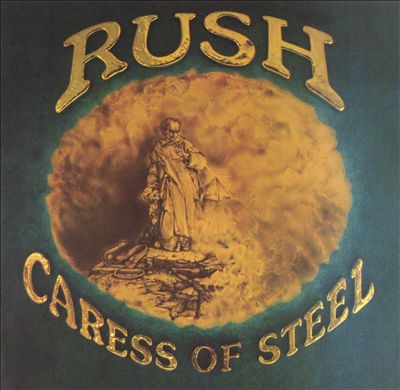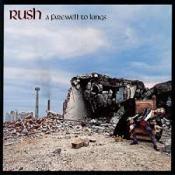Rush Recap: 20 Albums in 20 Days
Well, it sure has been a fun journey. Rush is a band that for forty years now has pushed the envelope, evolved with the times, challenged themselves, and produced some terrific albums. Simply put, there isn’t one original album they’ve released that doesn’t have some redeeming qualities. Even the worst Rush (except for Feedback) is better than many other bands’ best efforts.
Comparing all twenty albums is a bit ridiculous, because it’s like comparing four or five bands in one. It’s like contrasting The Beatles of 1964 to The Beatles of 1968 (and that there’s only four years separating “She Loves You” and The White Album is absolutely mind-boggling to me). When I’m in the mood for progressive Rush, A Farewell to Kings is the ultimate album for me. A more poppy Rush? Presto fits the bill. Something in between, then Permanent Waves is just about perfect. A more rocking album, and you can’t go wrong with Counterparts or Clockwork Angels. And if you want down-home blues rock, then Rush ain’t too shabby.
Nonetheless, I will put in order all twenty albums, recognizing that moods and tastes can change on yearly, if not daily, basis. Suffice it to say that my top five albums will probably be more or less consistent, and my bottom five albums are likely to stay the same (and even some of those aren’t all that bad). Everything in between is open wide for debate depending on the day. Here goes…
#1 Permanent Waves. Aside from a few production quibbles, a perfect album, the ultimate blend of accessible, exciting rock and roll, thought-provoking ballads and complex, progressive pieces.
#2 A Farewell to Kings. Such an interesting, exciting album, full of intricatacies that keep the listener's attention, yet still melodic and accessible with some wonderful shorter pieces.
#3 Moving Pictures. Side two wavers just a bit, but side one is among the most perfect album sides ever recorded. It's also a standout for it's clean yet full production.
#4 Presto. An accessible album that still has a bit of an edge to it. Exciting and moving, with some especially poignant lyrics by Peart. The band wishes they could record this album again. I have no idea what they would change.
#5 Hemispheres. A close second to its predessessor for best progressive album by Rush. The band manages a couple of short pieces as well, along with their best instrumental (or is it YYZ? Close call).
#6 Test For Echo. Yeah, I could have picked Counterparts, and maybe should have. Both are great albums as Rush began to explore a harder-edged sound. This is an oft-overlooked album that deserves a second look
#7 Roll The Bones. Good almost from start to finish, with relatable lyrics about fate and chance. Don't think it belongs here? Think again.
#8 2112. The first side is almost as good as Moving Pictures' first side. A near-perfect epic. Side two not as much, but a terrific album that turned things around for the wavering band.
#9 Counterparts. A great album whose middle sections loses it just a bit for me. "Double Agent" gets my vote for the worst original Rush song ever recorded. Holy crap.
#10 Clockwork Angels. That Rush can still produce an album of this quality is remarkable. A great effort, with shifting moods and instrumentation, with melody and riffs to boot.
#11 Grace Under Pressure. One of those albums that used to bug me. I still don't like "Afterimage," but oh well. A great bridge between guitar-Rush and synth-Rush.
#12 Hold Your Fire. A great poppy album with inspiring lyrics. The band may vote for "Tai Shan" is its worst song, but I accept it as a mild hiccup on a terrific effort.
#13 Signals. A better album than I expected, with some songs I'd forgotten about and perhaps didn't appreciate years ago. Men and boys rule the album - be them digital, analog or new world.
#14 Rush. A surprisingly good effort, with ridiculous lyrics but oh so sweet riffs and guitar solos. Better than most of the rock drivel that sold millions in the 70s.
#15 Power Windows. Some wonderful tracks that suffocate under the weight of exhausting synth-heavy production. I'm a keyboardist, and I know a thing or two about the synthesizer, but this goes way over the top. "Territories" is the standout here.
#16 Fly By Night. Yes, a few hiccups here and there, but some terrificly accessible rock songs and a few lengthy numbers that set the stage for what's to come.
#17 Vapor Trails. A tiring, endless album that sabotages its finest moments with terrible sections. The first two tracks save this album from last place.
#18 Caress of Steel. Some interesting parts, but ultimately an inconsistent release.
#19 Snakes and Arrows. I know several Rush fans who would put this album in their top five. For me it's an endless, morose, unvarying effort.
#20 Feedback. Absolutely pointless and unredeeming.
So there you are. Disagree? Chime in and let me know. After all, Rush fans can disagree. As Peart penned, "Everybody got to deviate from the norm."























